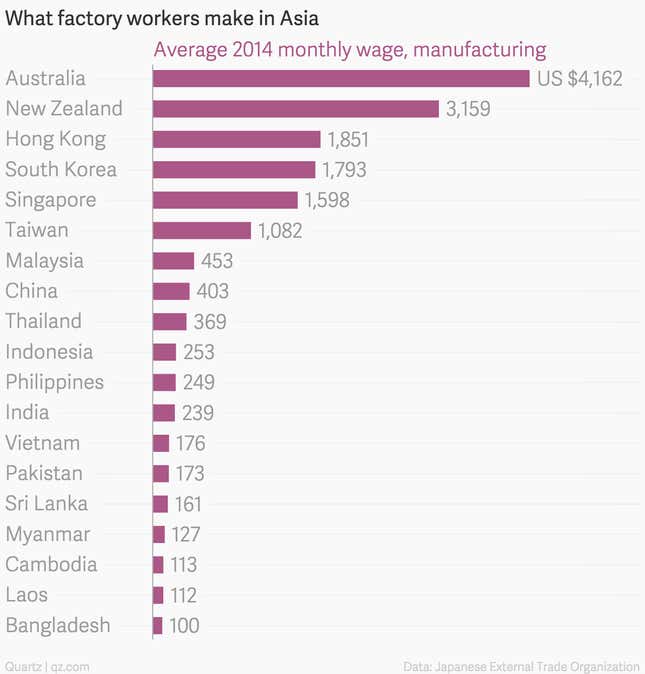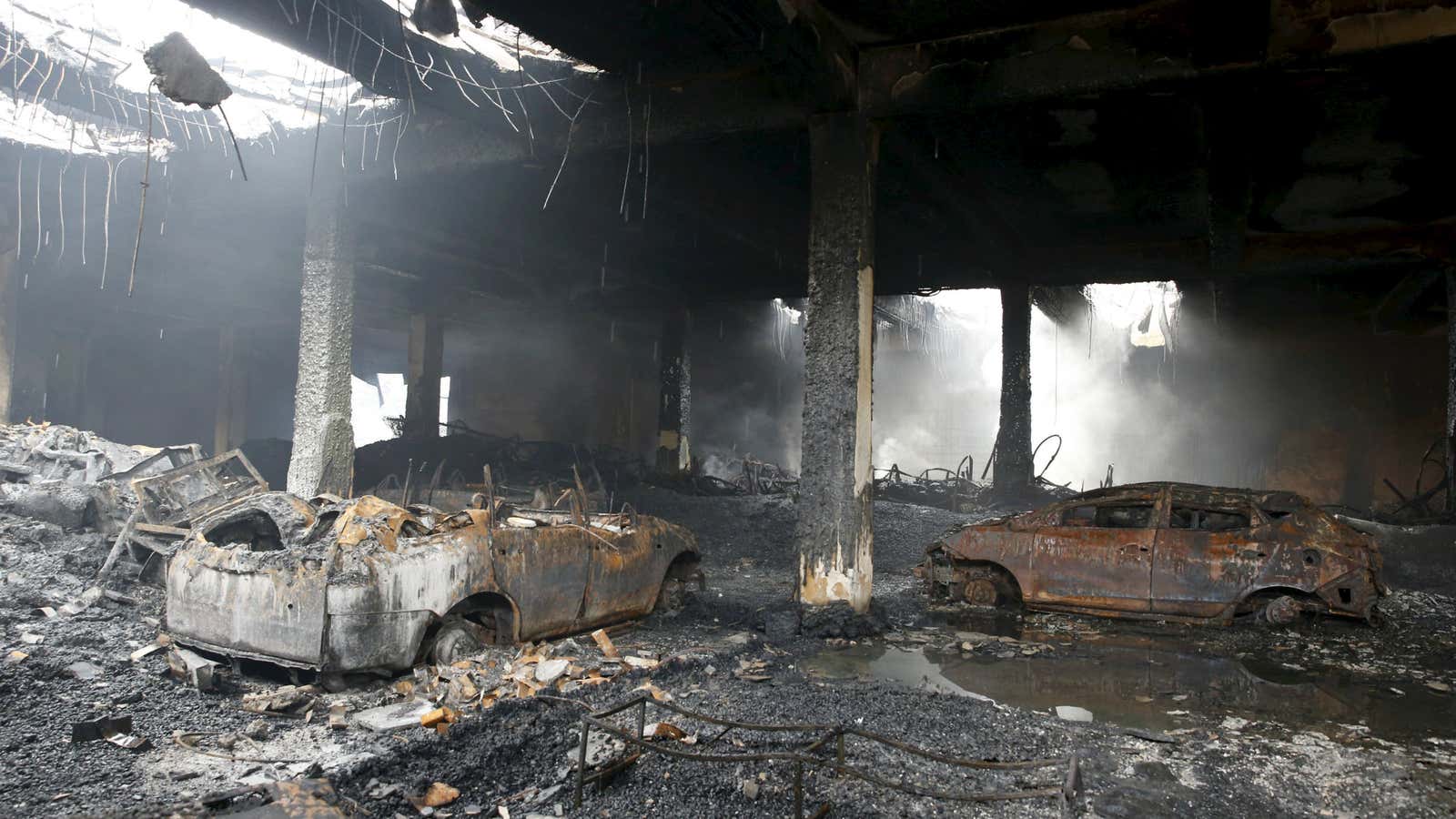The Kentex Manufacturing factory fire that killed 72 workers last week in a industrial neighborhood outside of Manila is highlighting weakness at the heart of one of Asia’s fastest-growing economies.
Thanks to a combination of increased outsourcing work, growing remittances, and government expenditure, including in manufacturing-related infrastructure, the Philippines economy has been one of the fastest-growing in Asia in recent years, even besting China at one point. The country boasts one of the region’s youngest and fastest-growing populations.
But a vital ingredient to the Philippines’ continued economic success is growth in its manufacturing sector.
The Philippines has one of the lowest average manufacturing worker wages in Asia, according to a 2014 survey of Japanese companies that outsource manufacturing through the region, although it is still more than twice that of Bangladesh.

While textile and shoe manufacturers have raced to super-low-wage Bangladesh, the Philippines is trying to attract higher-value tech manufacturing work. Economists believe high value manufacturing is vital to the country’s long-term development, and consultants have dubbed the “key industry” for the country in the next 20 years. Well-paying jobs are key to increasing domestic consumption to fuel stable economic growth in the Philippines.
Philippines officials have said recently that Foxconn is looking at making Apple products in the country, as rising wages in China prompt companies to look elsewhere. Japanese companies from bicycle manufacturers to car makers have set up shop in the Philippines in recent years, as the government pushes what it calls the “China+1” strategy to attract global manufacturing.
Last week’s factory fire may make some companies think twice. Both Kentex Manufacturing and the shoe company it was working for were locally owned, but the conditions that it operated under were not that uncommon in the Philippines, local labor leaders said.
They were also incredibly grim and fatally negligent.
Leaders told the AFP many workers in the factory were recruited by subcontractors, paid below the minimum wage, and worked long hours amid unsafe materials. Bars on the factory’s windows prevented workers from escaping when poorly stored materials caught fire, and there was no working fire safety equipment, firefighters, government officials, and surviving workers said. Only 60% of businesses in the Philippines comply with government labor standards, officials said after the fire.
“This is just one factory but it represents the… kind of factories in this country,” Alan Tanjusay, spokesman of the country’s largest labor federation, told AFP.
